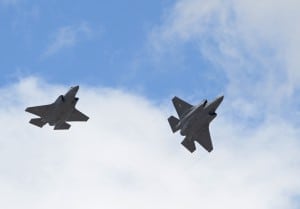
Congress came to a deal late Tuesday night on government spending for the current fiscal year, unveiling a $1.1 trillion package that includes about $573 billion for the Defense Department.That sum, which breaks down to $514 billion for Defense Department base expenses and $59 billion for the Overseas Contingency Operations, is in line with the Bipartisan Budget Act, a House aide told Defense Daily. The budget deal’s $607 billion limit for defense also includes national security funding that is covered…










